Mirabilia
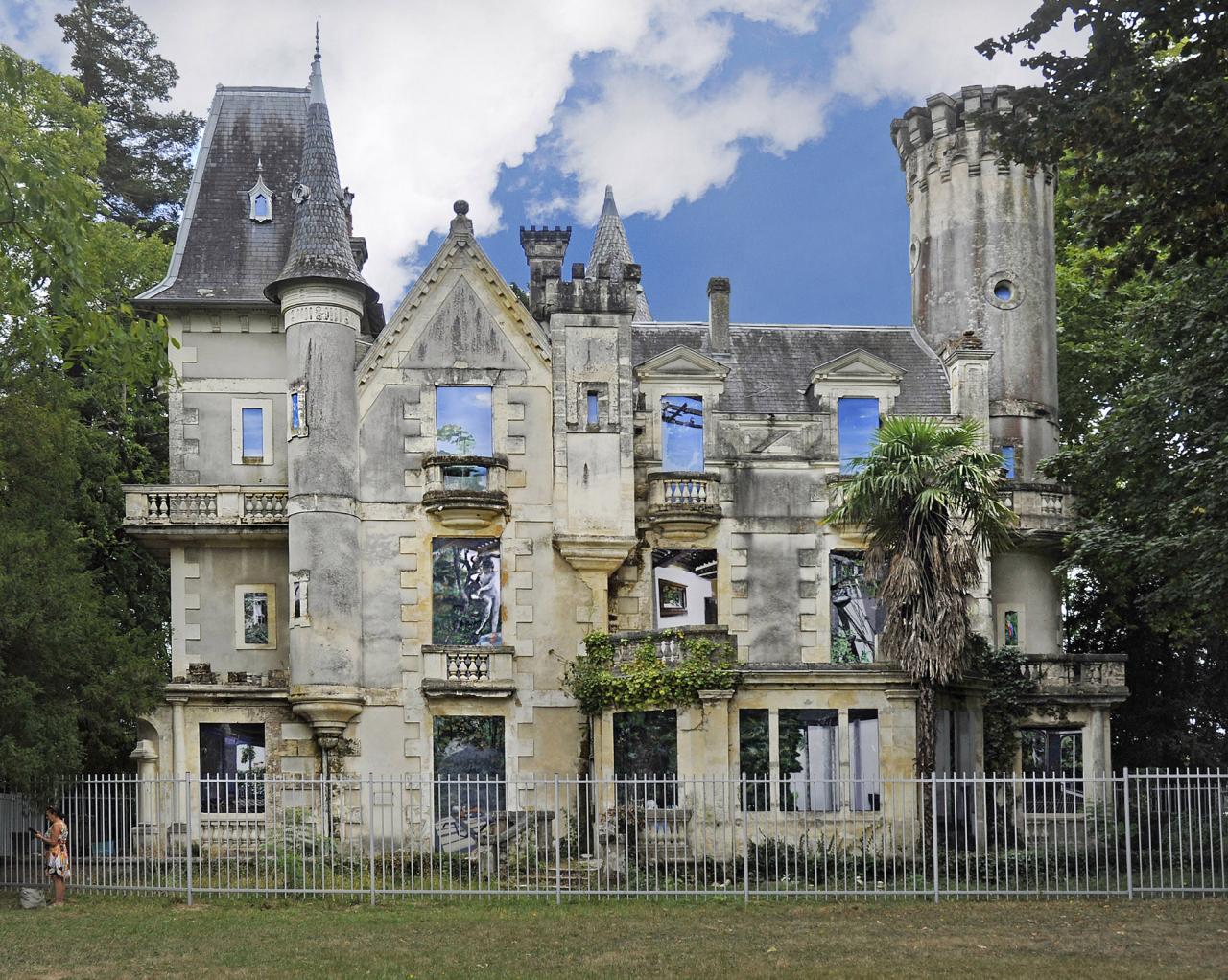
Public commission
63 paintings installed in the façade of Château du Bois Fleuri
Parc du Bois fleuri, Lormont
Mirabilia, a public commission for the decoration of Château du Bois Fleuri, Lormont, by Muriel Rodolosse (begun September 25, 2020).
By entrusting this heritage to an artist, the city of Lormont, to whom the late 19th-century neo-Gothic manor has belonged for some fifty years, decided not to restore it, but to close its doors definitively and accompany its slow transformation into ruins.
The work Mirabilia is one with the château: the artist replaces each of its 63 doors and windows with paintings. We find interiors sometimes inhabited, furnished and decorated with curious objects, in varying states of decline, referring to different eras and narratives. Some are inspired by the château’s past, while some are imaginary or look to the future. Plant life starts taking hold; on the top floor, blue sky appears as if the roof or rear façade collapsed. An illusion is thus created disturbing perspectives and stirring the imaginations of visitors strolling in the Bois fleuri park around the château.
The 63 paintings of Mirabilia are on Plexiglas (a technique of inverted painting), Rodolosse’s preferred medium since 1996. The Plexiglas surface acts as a mirror, letting the paintings in Mirabilia mix into the external environment through reflected trees from the park and the sky above. The piece is part of the artist’s work on motion, movement in space, and the exploration of imaginary, timeless spaces in which landscape, architecture and hybrid figures hide and are revealed.
Open air cabinet of curiosities
The uniqueness of the work resides in the château’s ultimate metamorphosis into a pictorial mirror in which nature, history and stories, sprung from the structure itself, are reflected. The title evokes the combination of marvelous and monstruous, echoing the Renaissance cabinet of curiosities which brought together remarkable scientific, natural and artistic objects. A tool for understanding and taking stock of the world, it told a story, offered a perspective in which the extraordinary, the fictional and the wonderful each have their place.
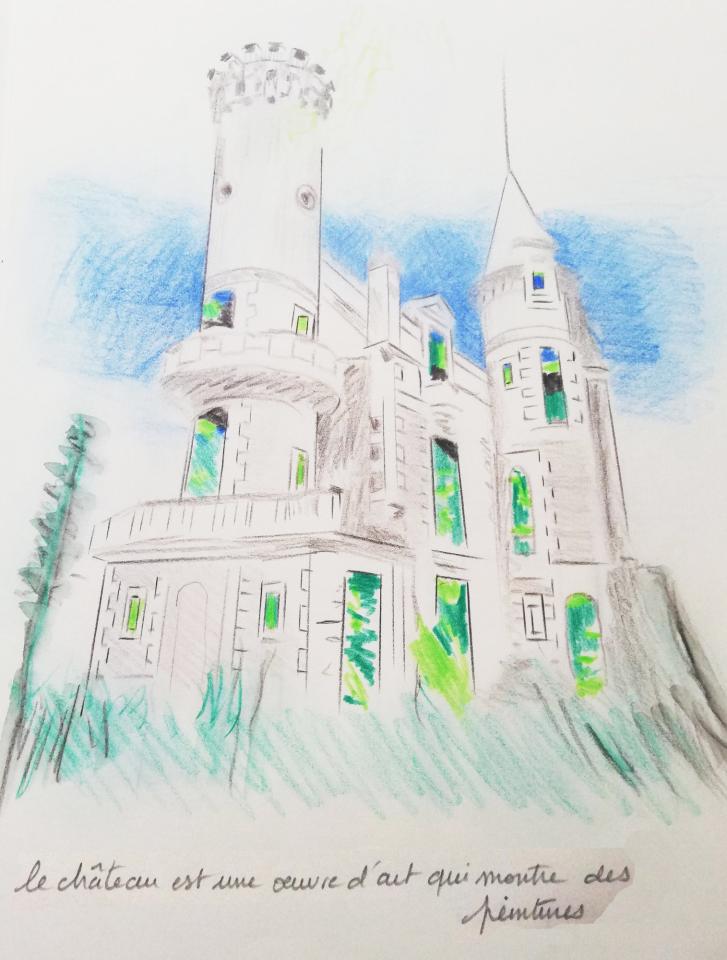
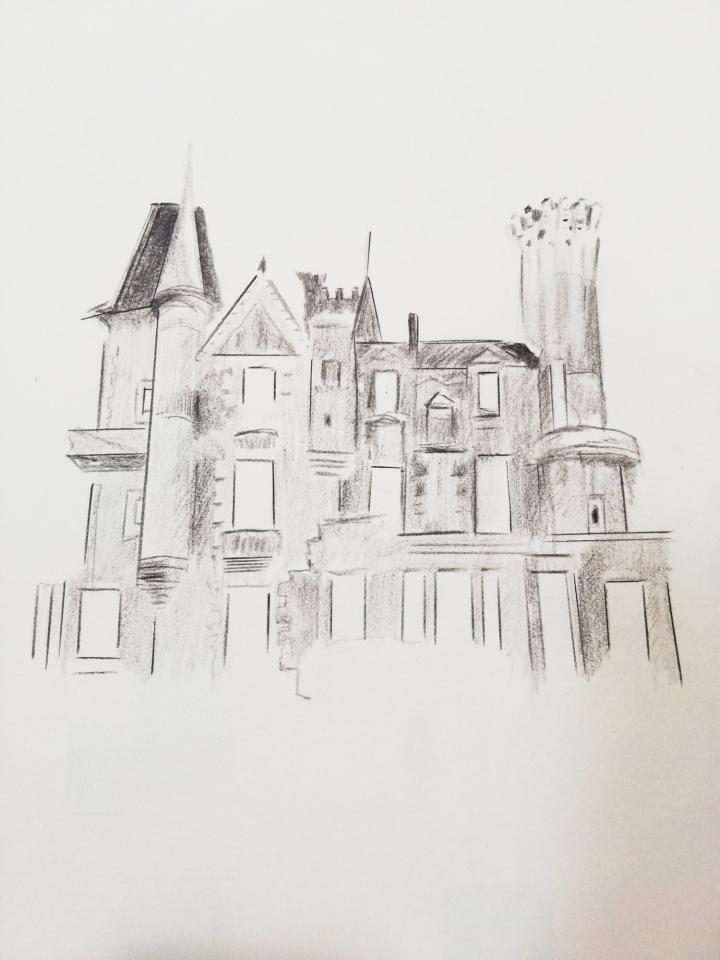

Here the notion of time presents itself in many ways, indeed, it’s the main character. Time’s passage is legible on the body of the château, showing scars of age and abandonment: cracks, ivy, crumbling walls, condemned windows and crooked rails. Intended to assist the building in its old age, the paintings become prosthetics which transform the château into a work of art. Citing different interior architectural elements (chandeliers, molding, mosaic work for baths, woodwork…)—vestiges of its former role (as a place of leisure, collective residence, public library) the artist draws from different strata of the building’s life.
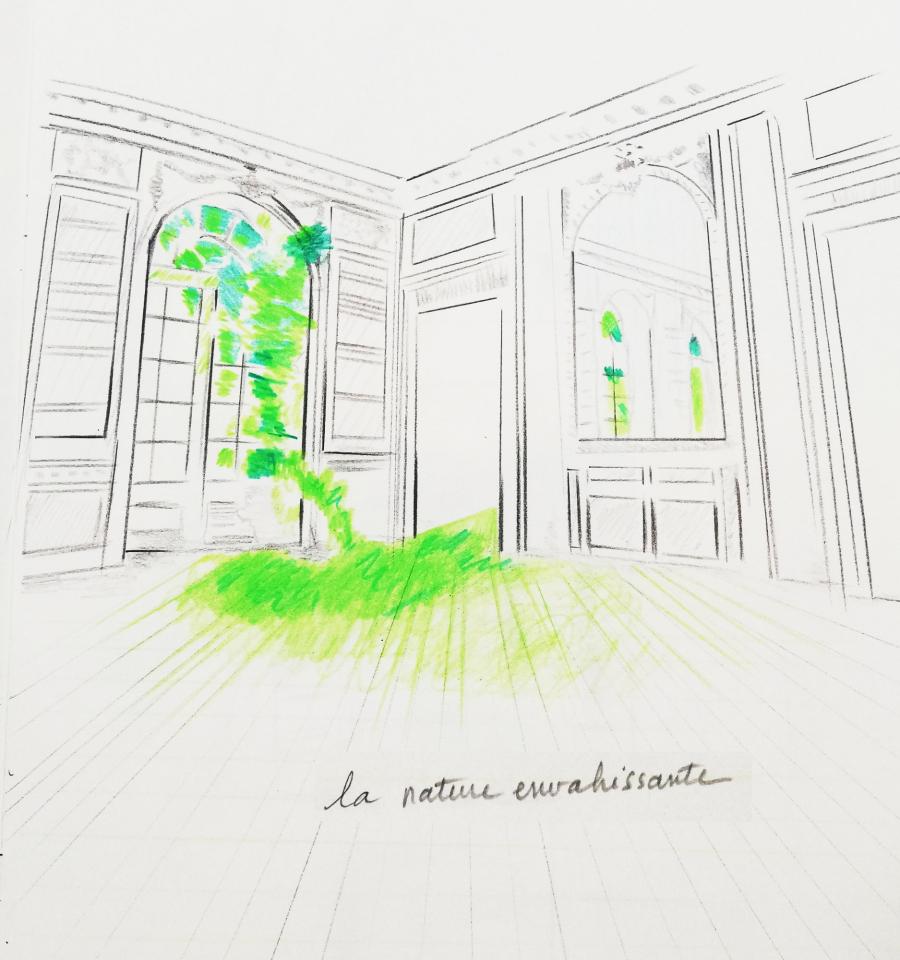
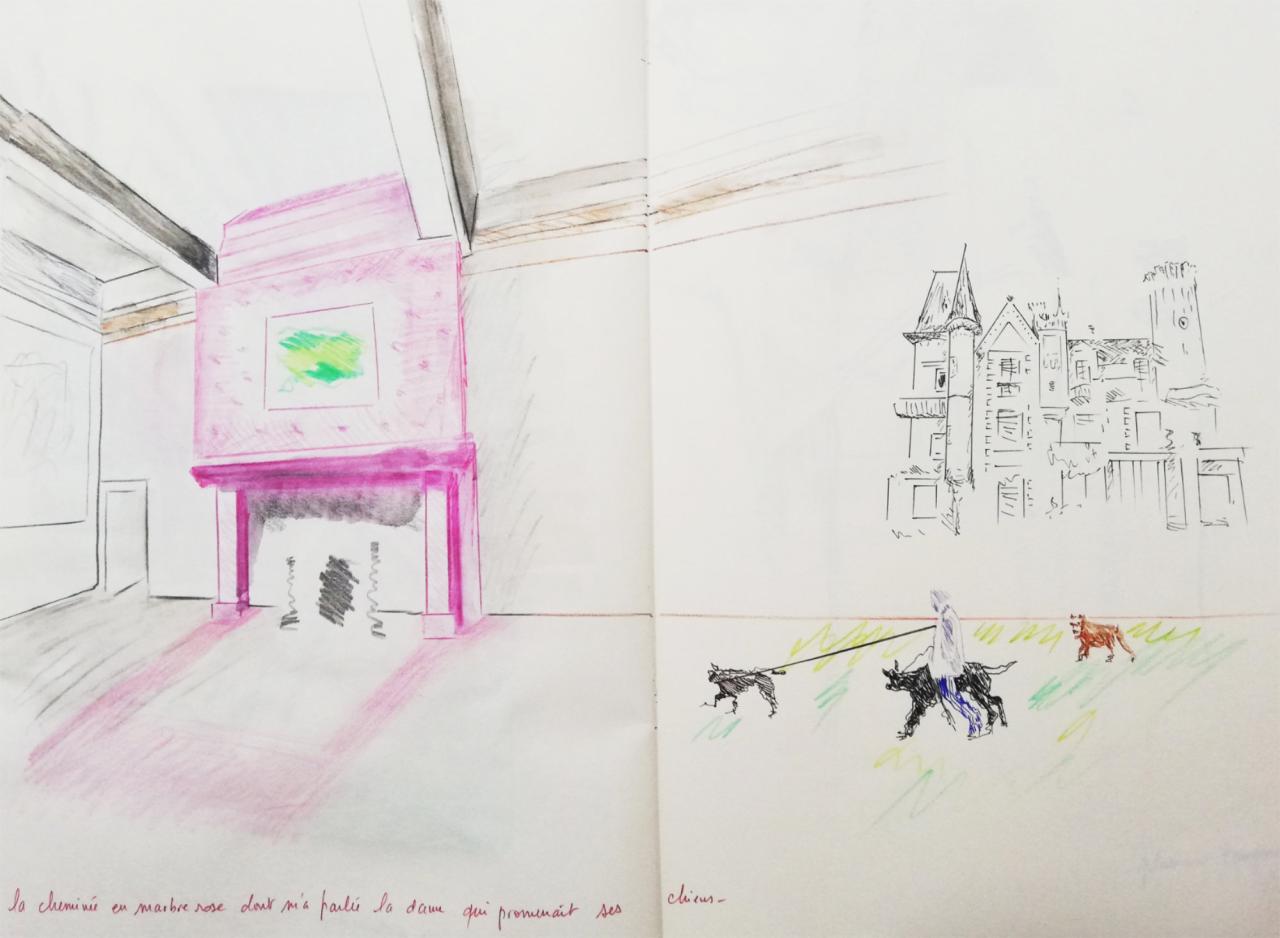
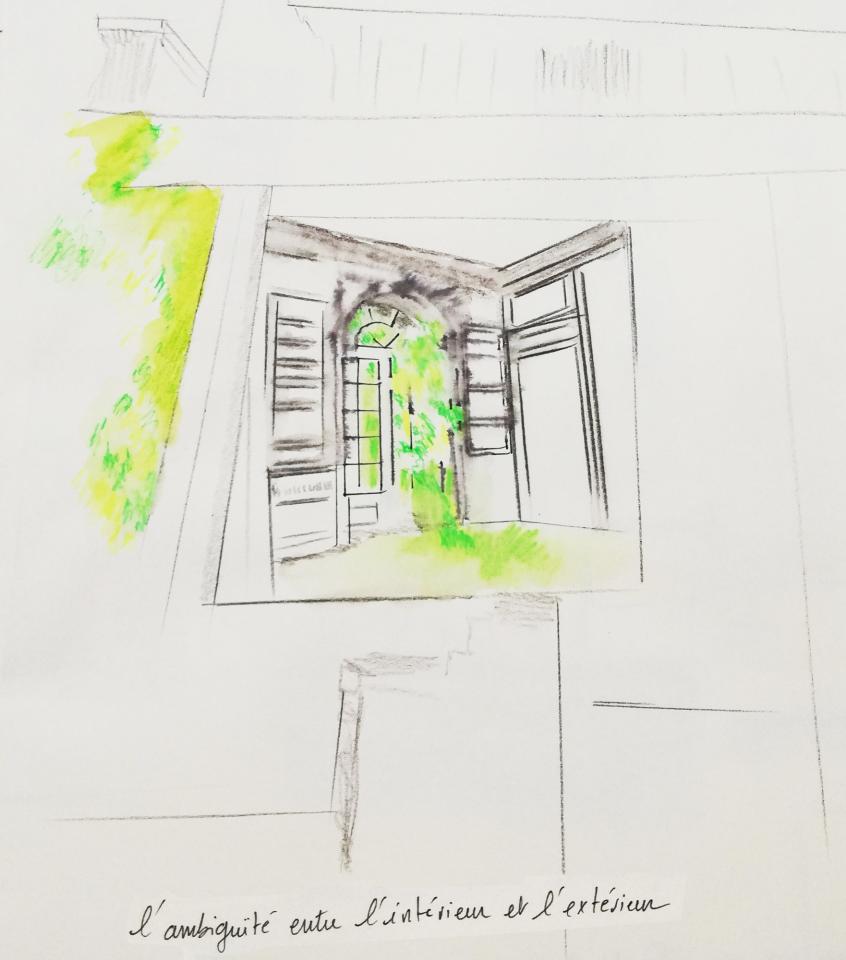
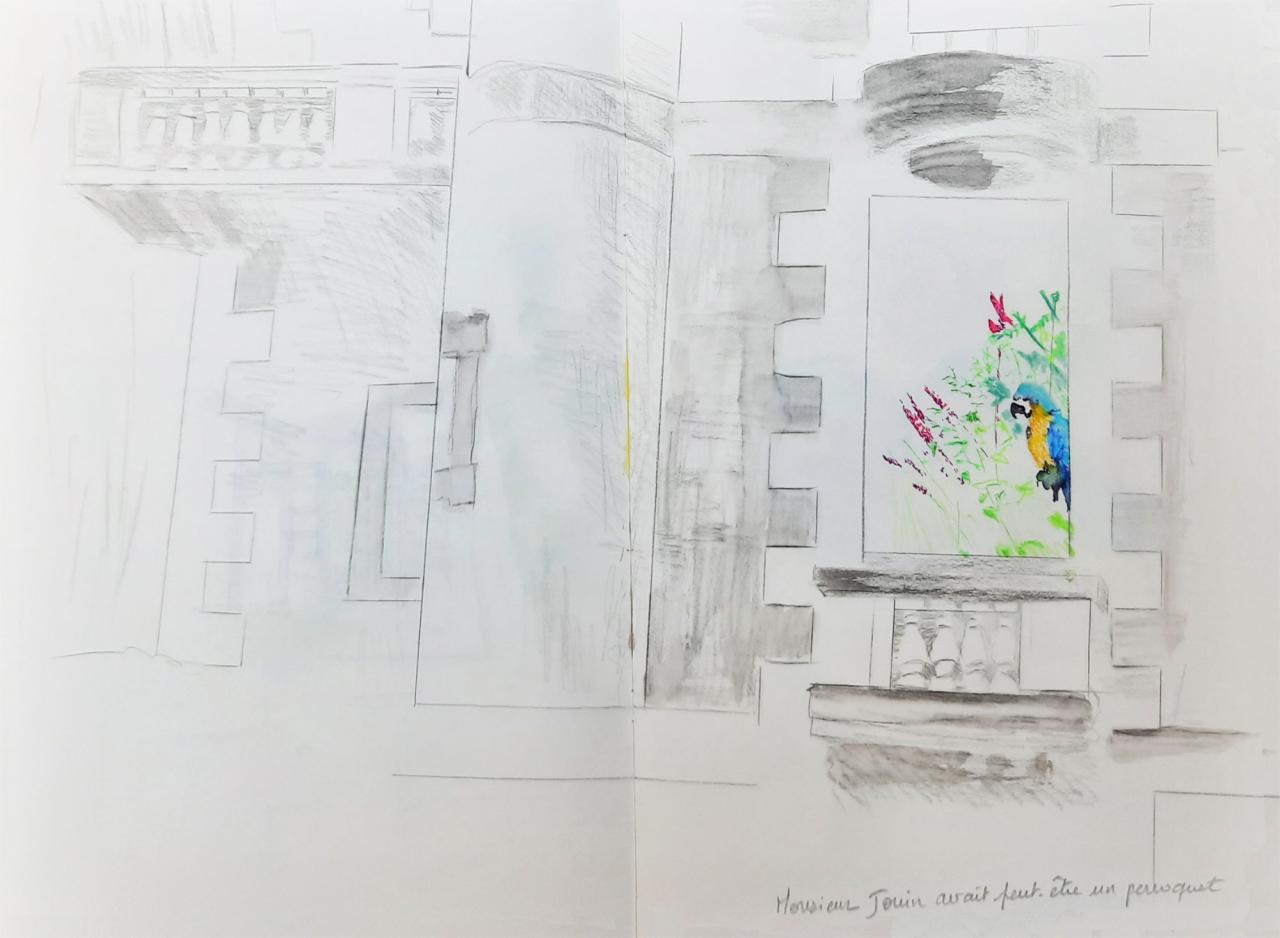
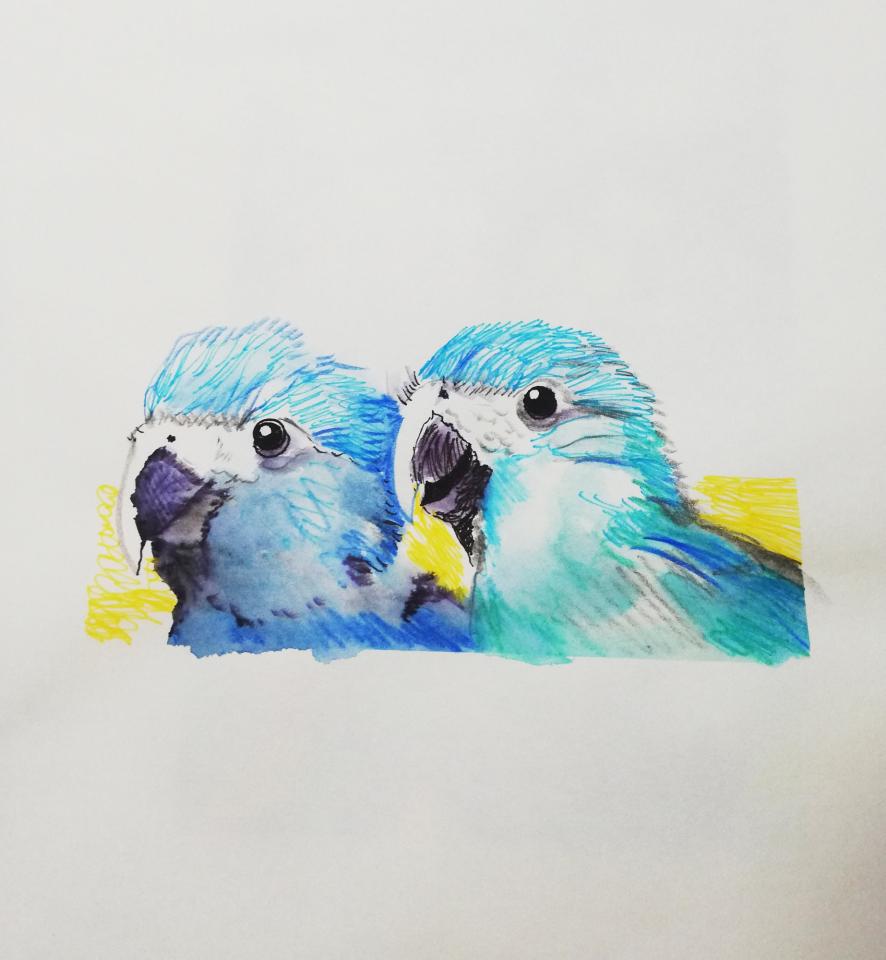
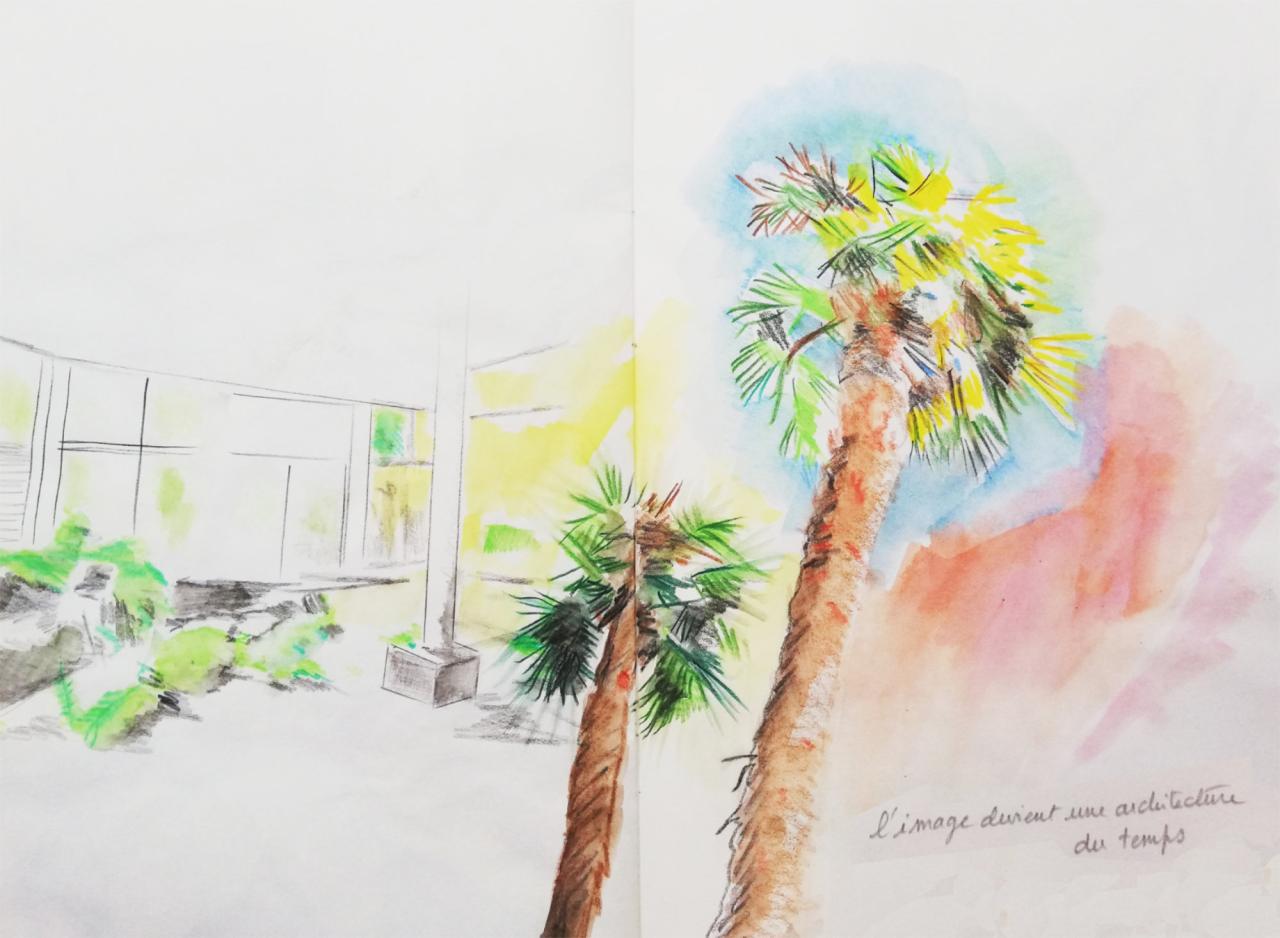
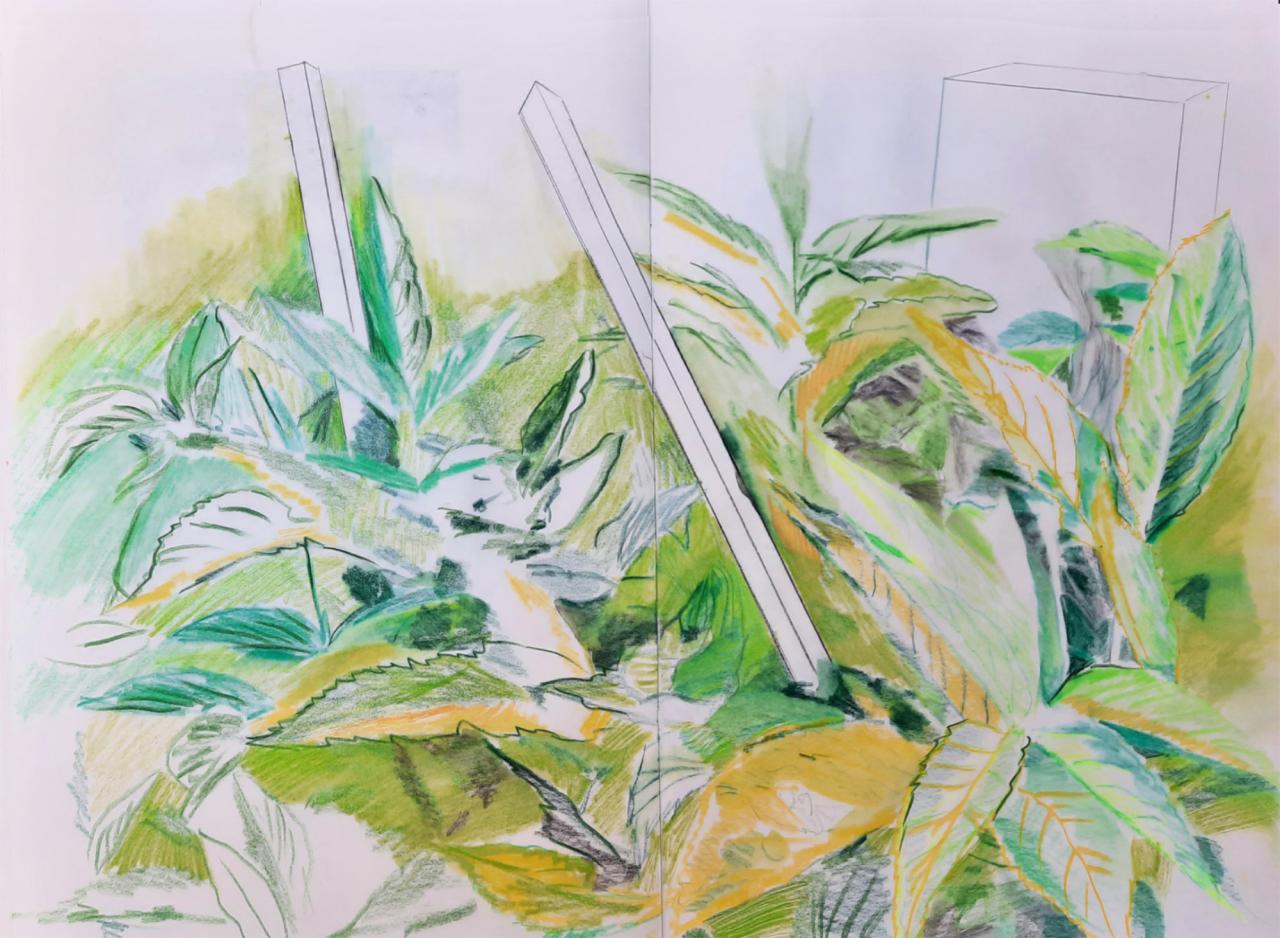
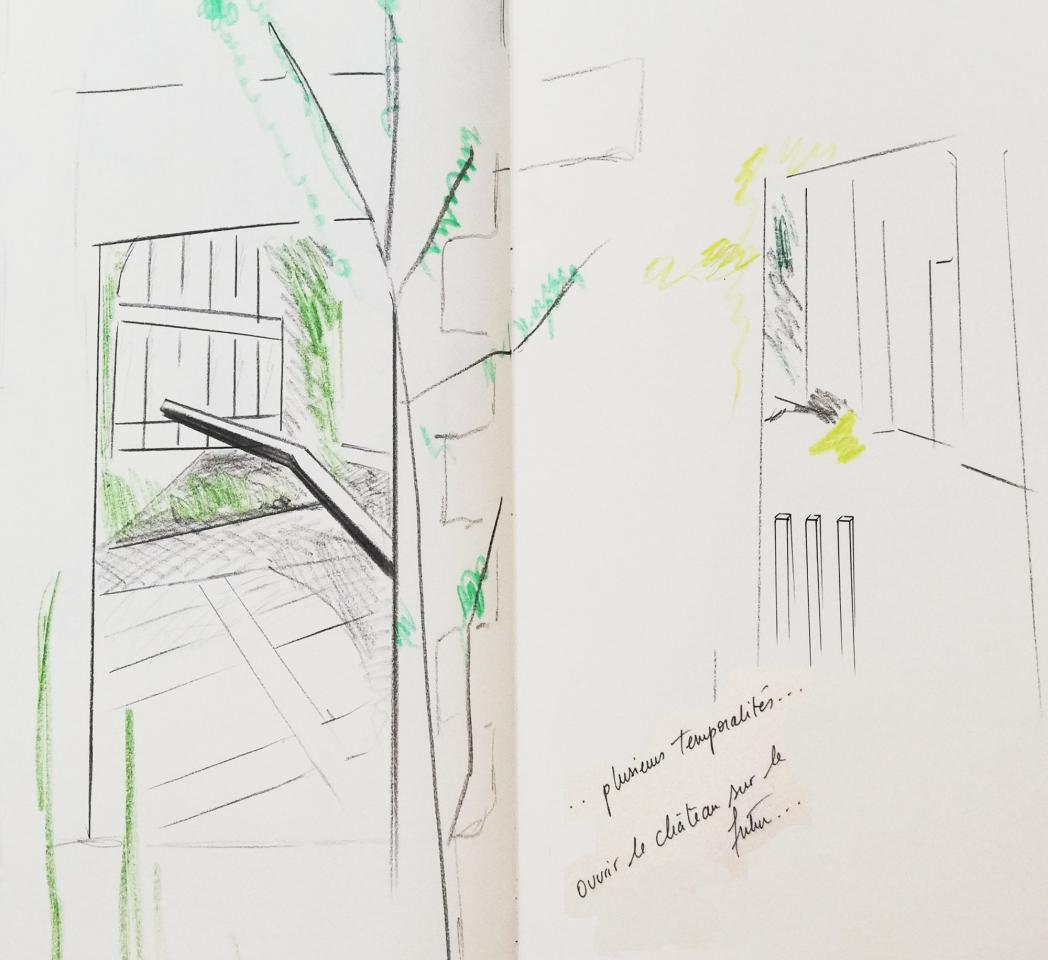
Rodolosse is not interested in the authenticity of the past, for her that “happens elsewhere.” She thus avoided using archival documents that might prove too confining. In this vein, while her paintings approach a photographic realism, she does not base them on views of the château as it is, rather she looks to details to create new points of view. On site, she also produced a series of sketches which are, in her words, “starting works, and appropriations of the space” […]
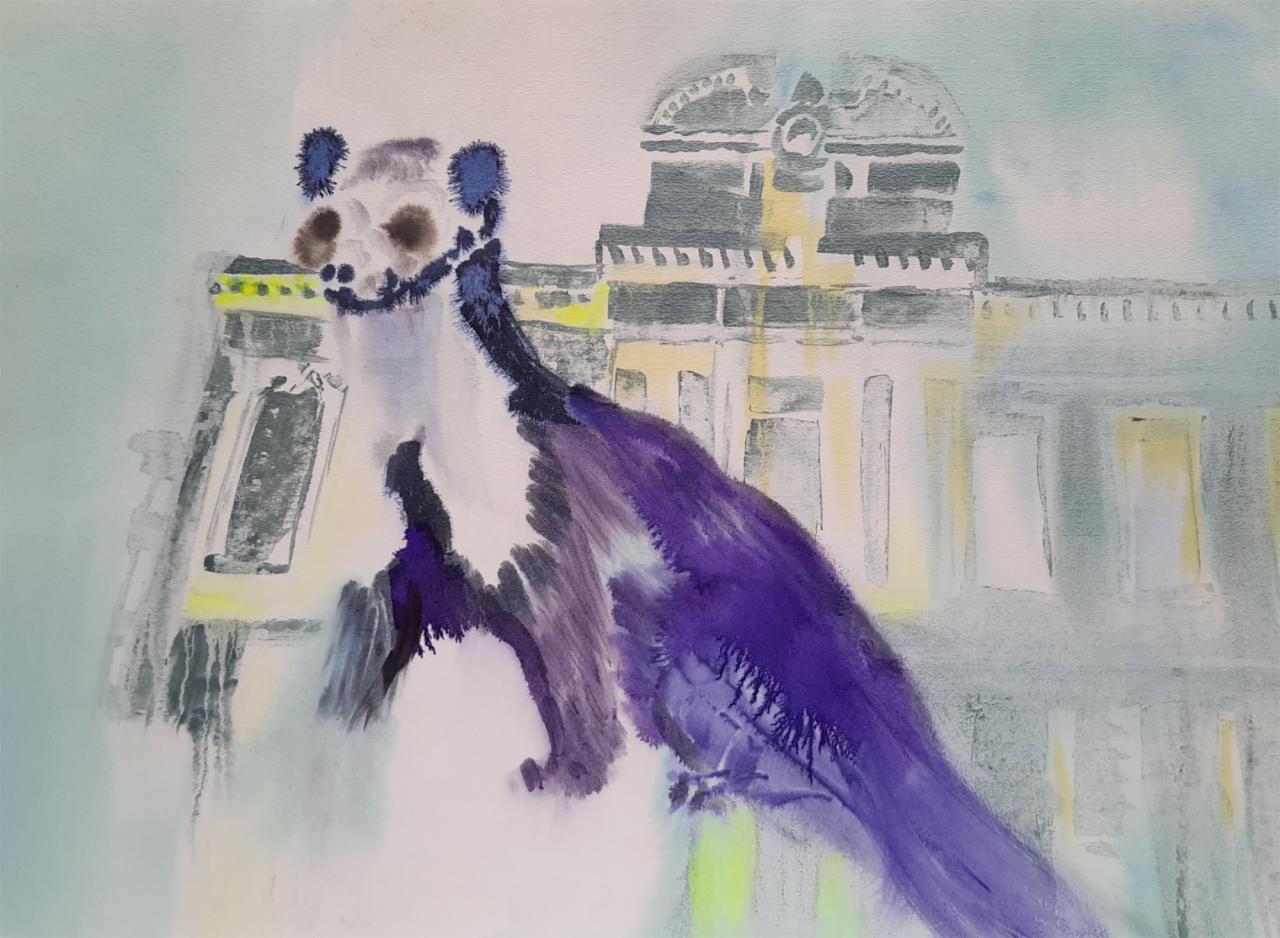
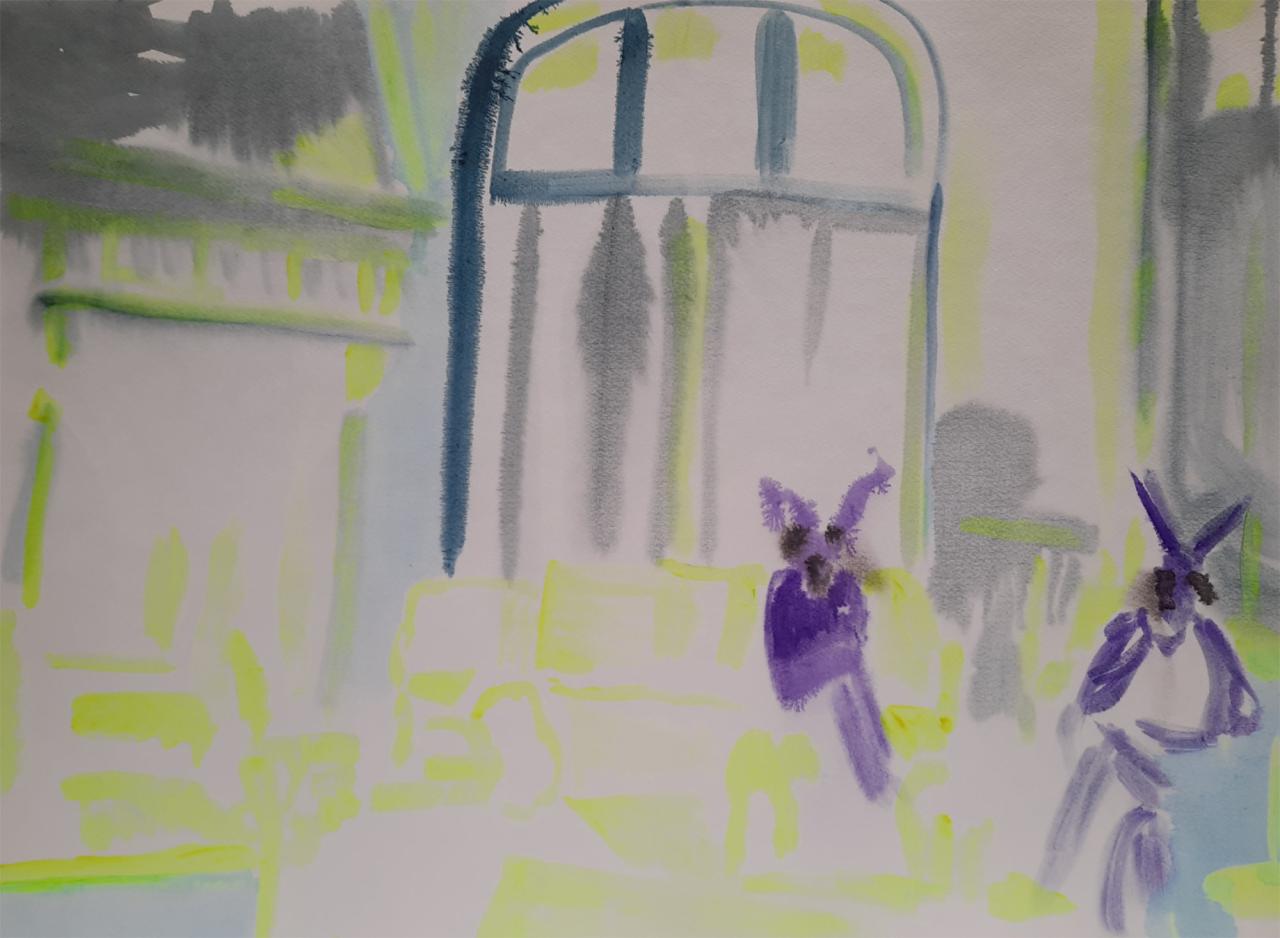
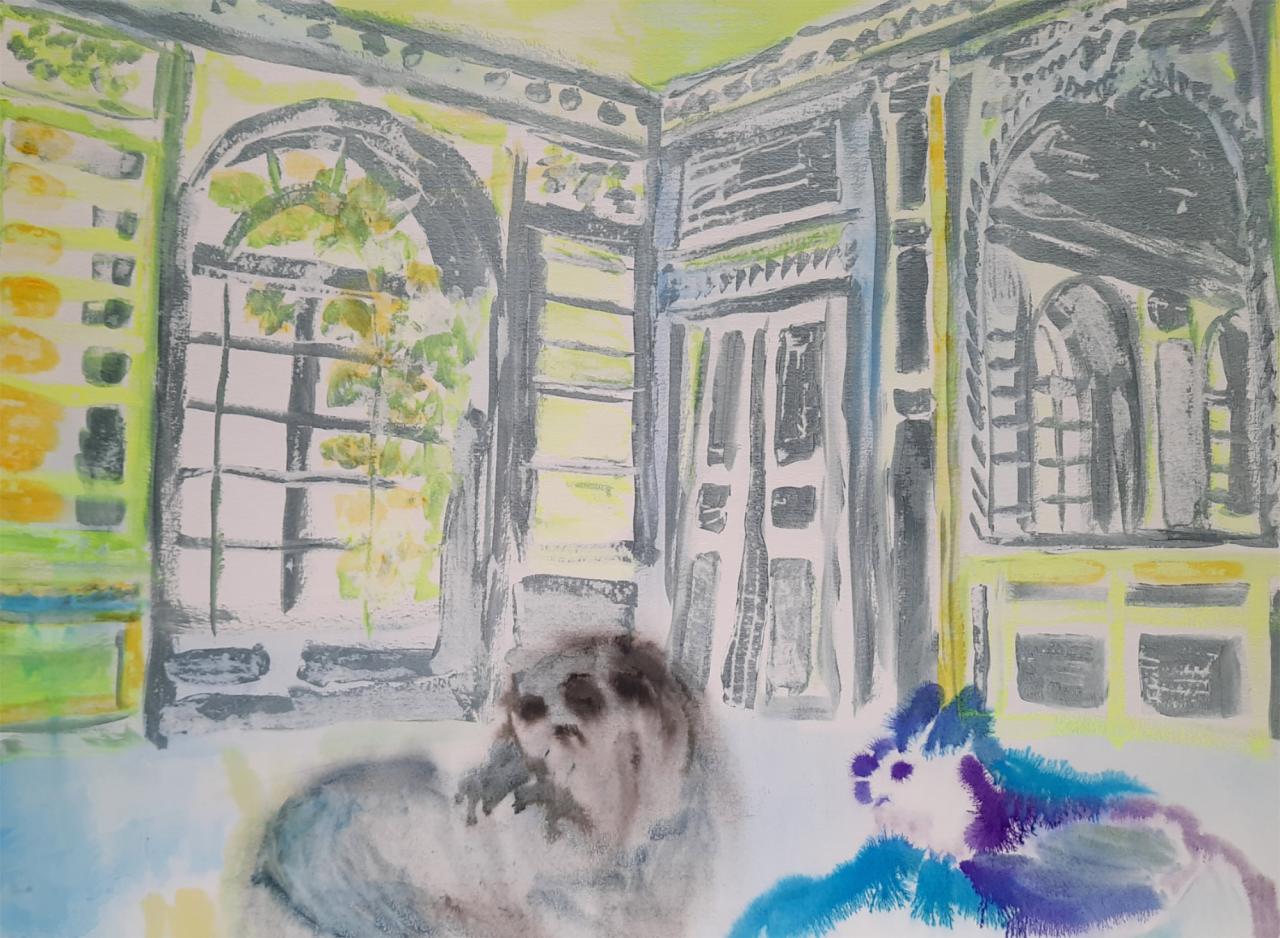
Attention to detail
Before any stroke of painting, Muriel Rodolosse first took the measure of each of the château’s 63 openings. Each dimension was then transferred onto a piece of Plexiglas thick enough to accommodate the artist’s work. To securely maintain the future pieces in the embrasures, a system of flat iron frames, provided by a metal worker, were fixed to the backs of the paintings while in studio. The angle moldings were mounted in the embrasures of the château’s windows. Finally, the polycarbonate sheets were attached using a weather-resistant polymer adhesive. Custom installing the panels and concealing the mount reinforces the analogy with the idea of a window as an opening to another space.
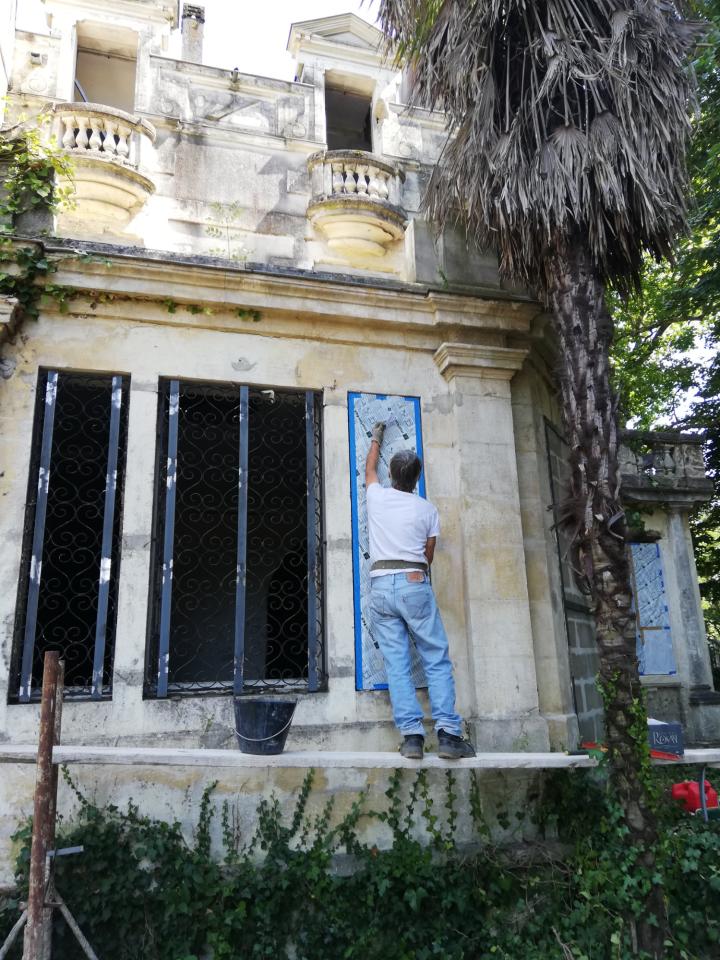
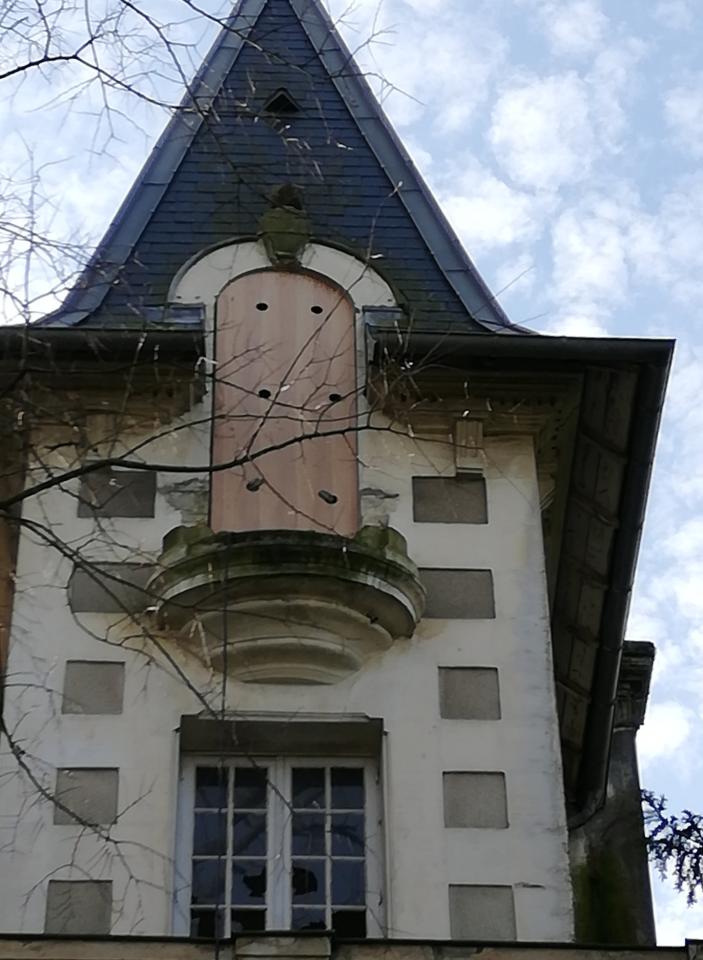
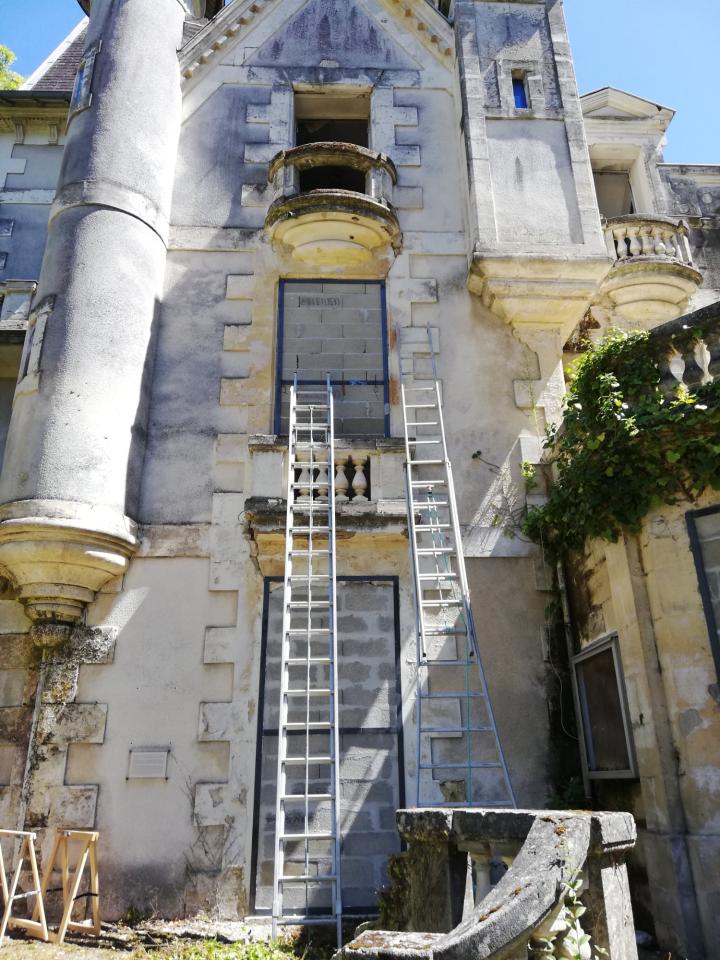
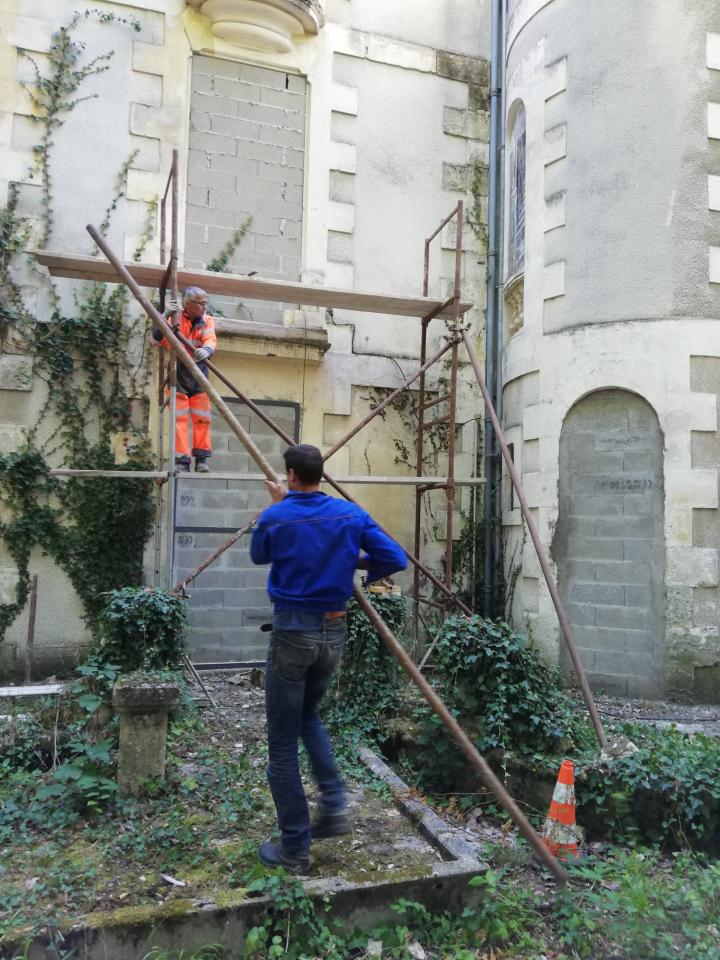
An invitation to stroll
The work sets the scene of the space, inviting the visitor to stroll and contemplate, in a strong artistic signal. It symbolically links nature and culture, in keeping with the renovation of the Génicart neighborhood, the Rue des Arts project. The spectator’s gaze participates in the work, readily linking Mirabilia’s scenes and vanishing points to its environment.
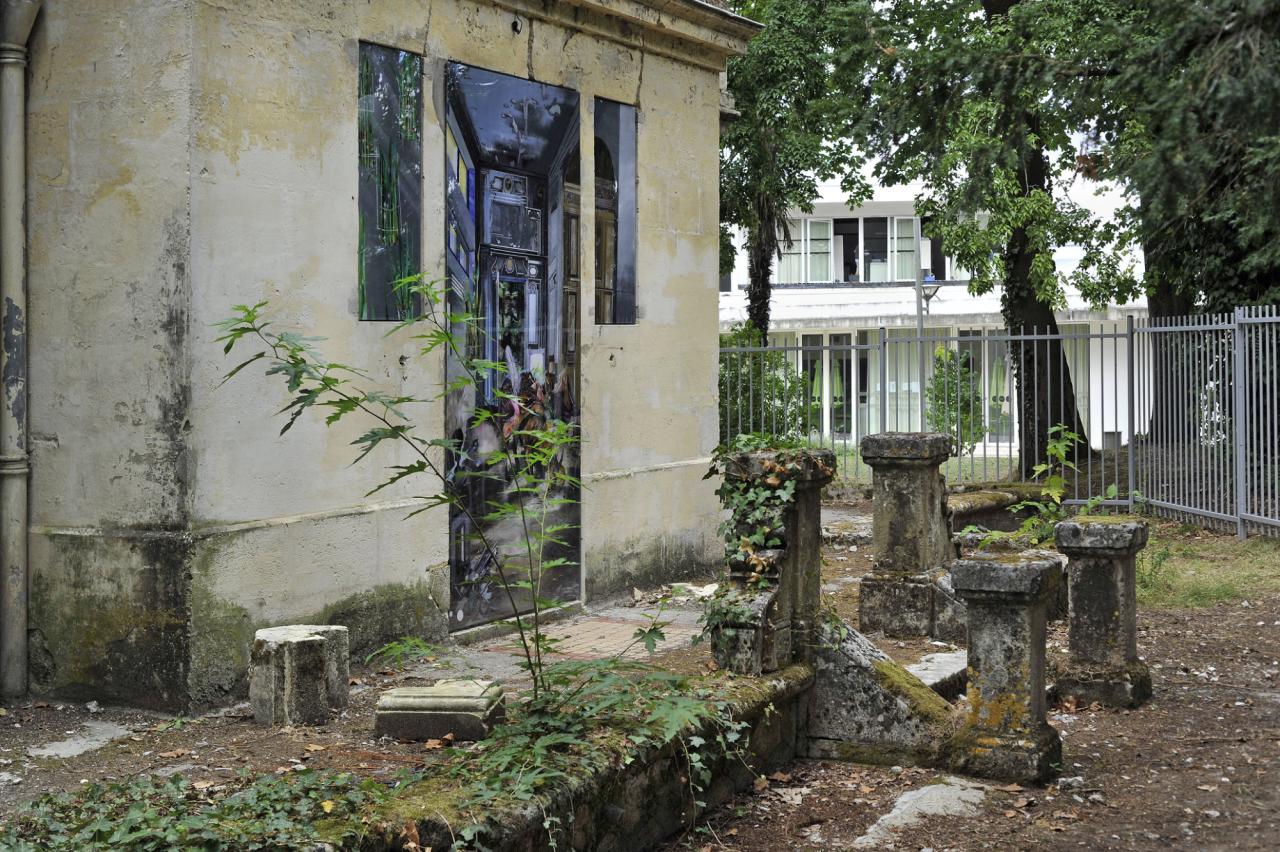
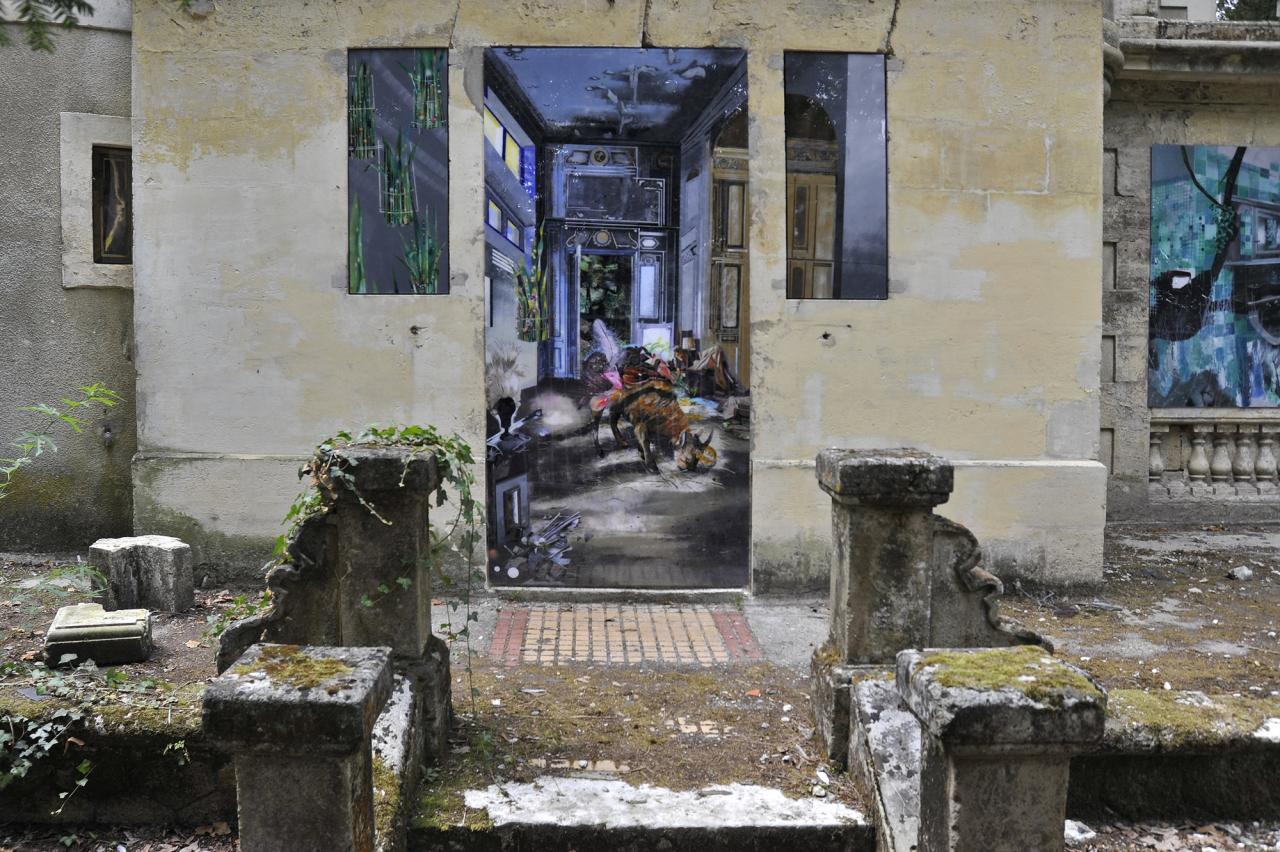
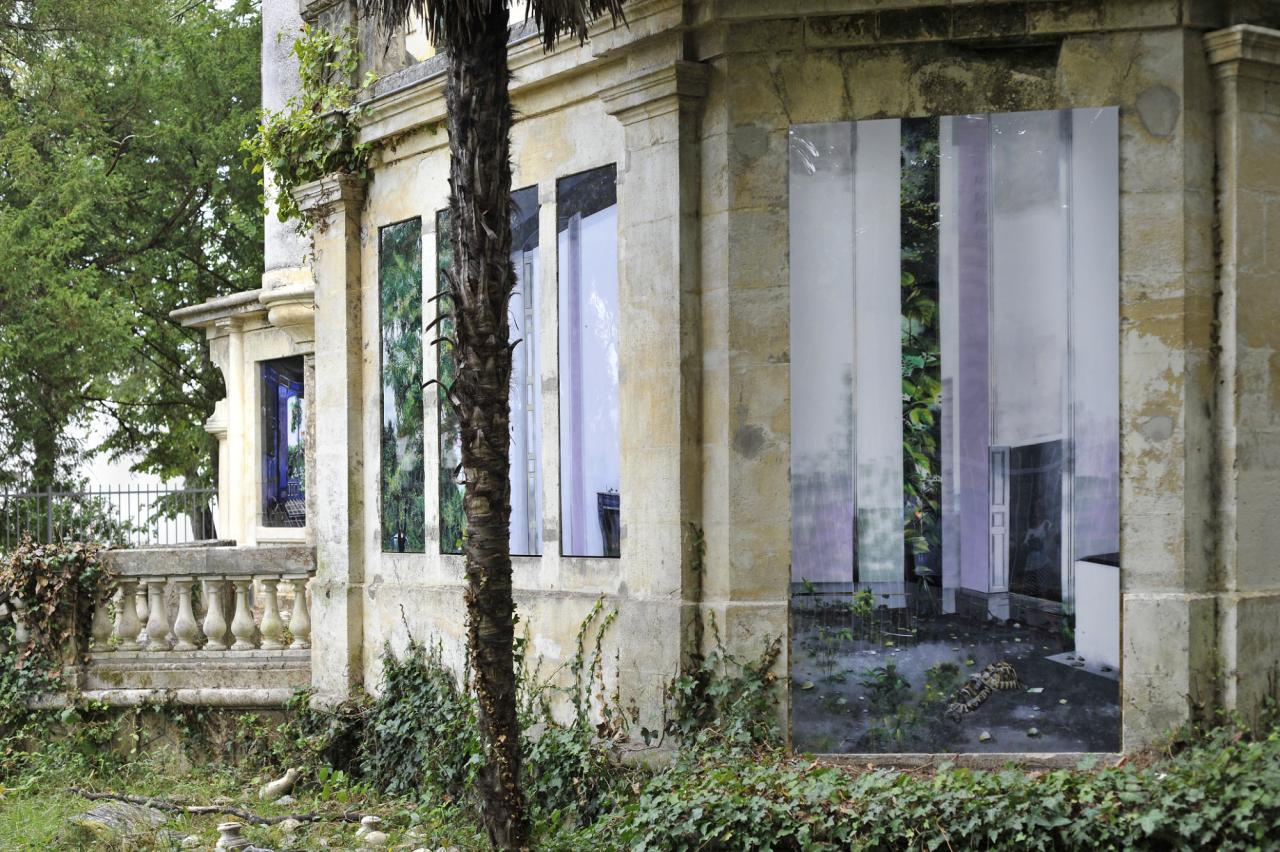
Muriel Rodolosse creates hybrid worlds in which space and time converge, profusions of flora engage with architecture and animals, and enigmatic human figures move about. Thus a narrative is woven between paintings and their exhibition sites in an immense frame that makes it possible to stage a multitude of perspectives seen as theatrical paintings, appealing to viewers as they move through the space.
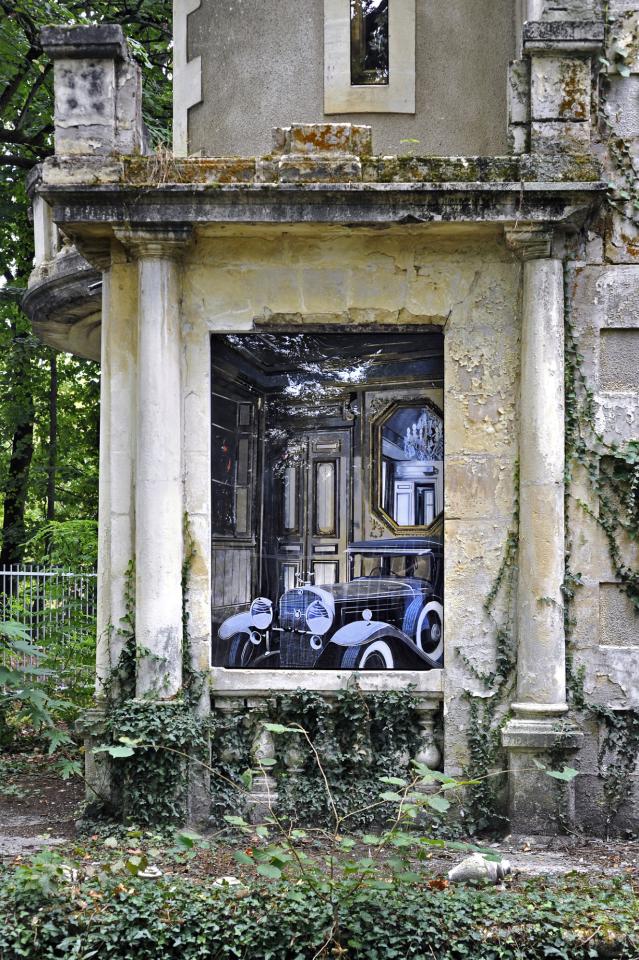
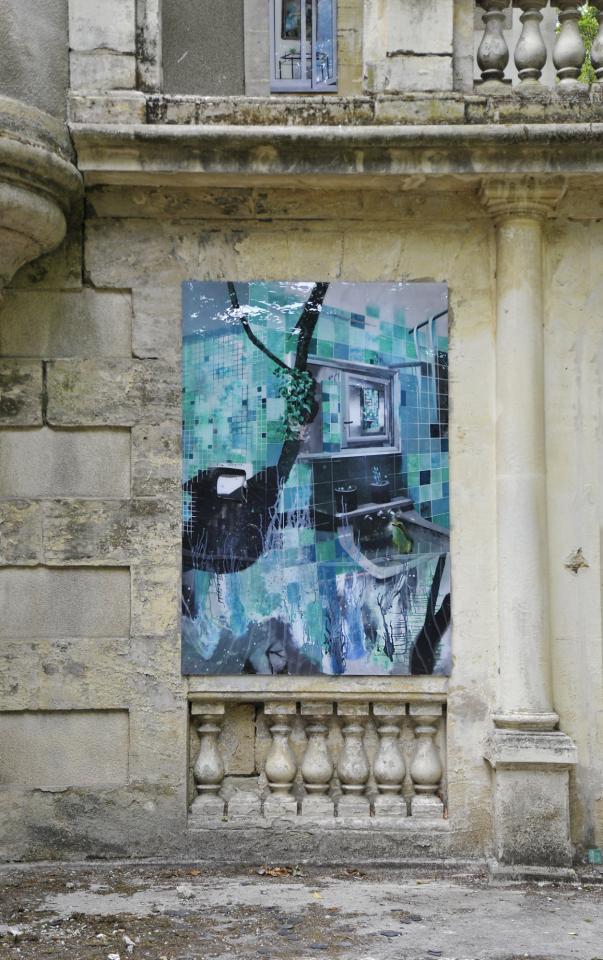
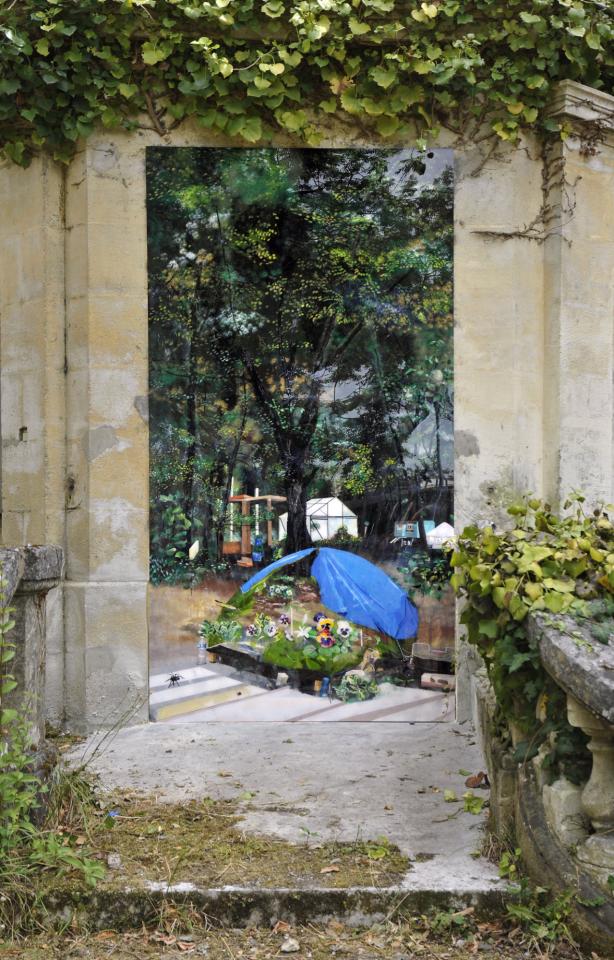
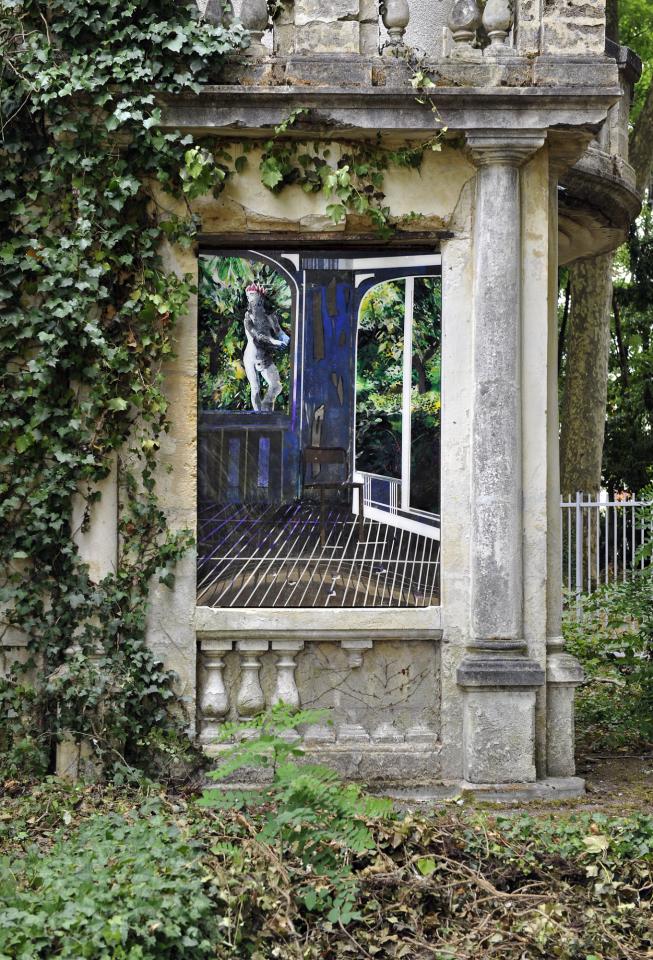
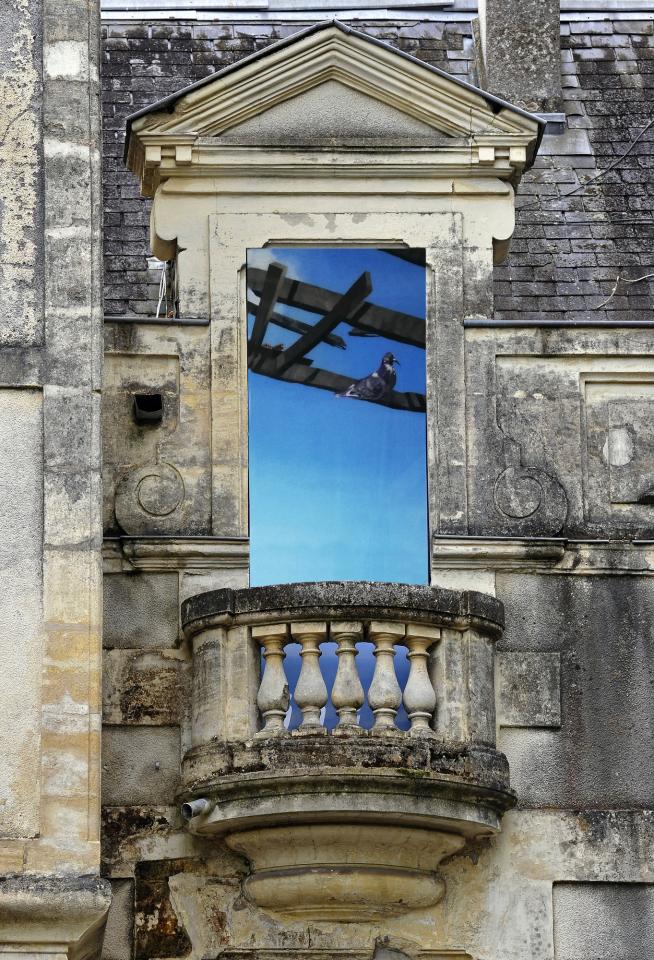
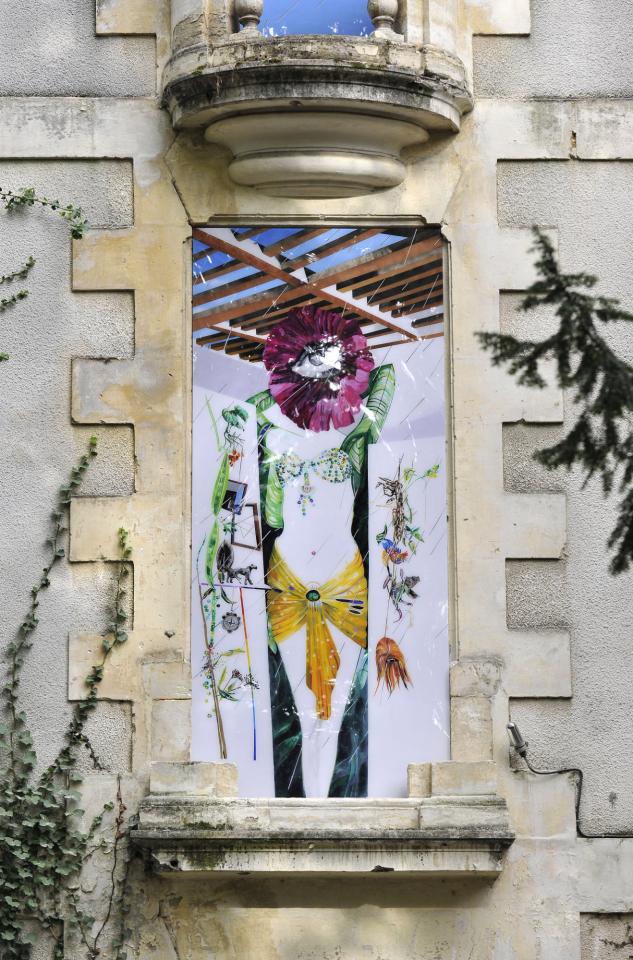
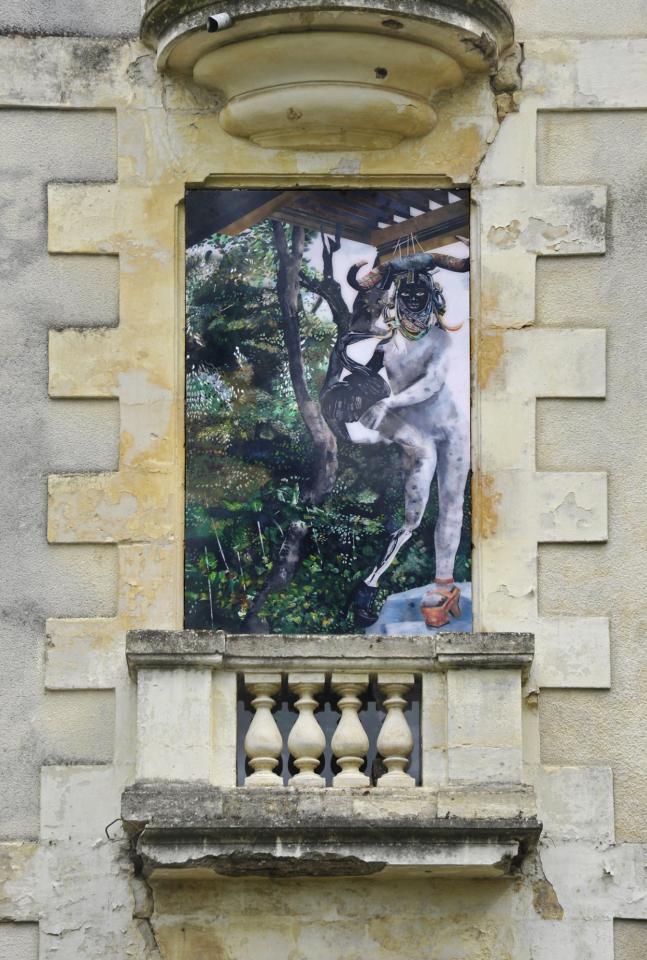
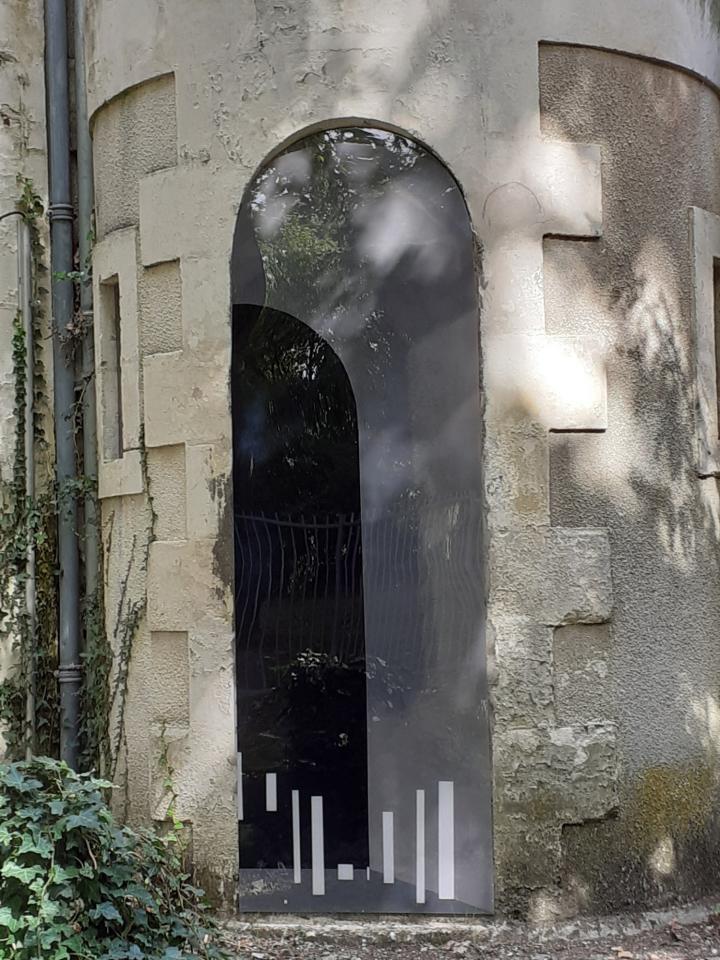
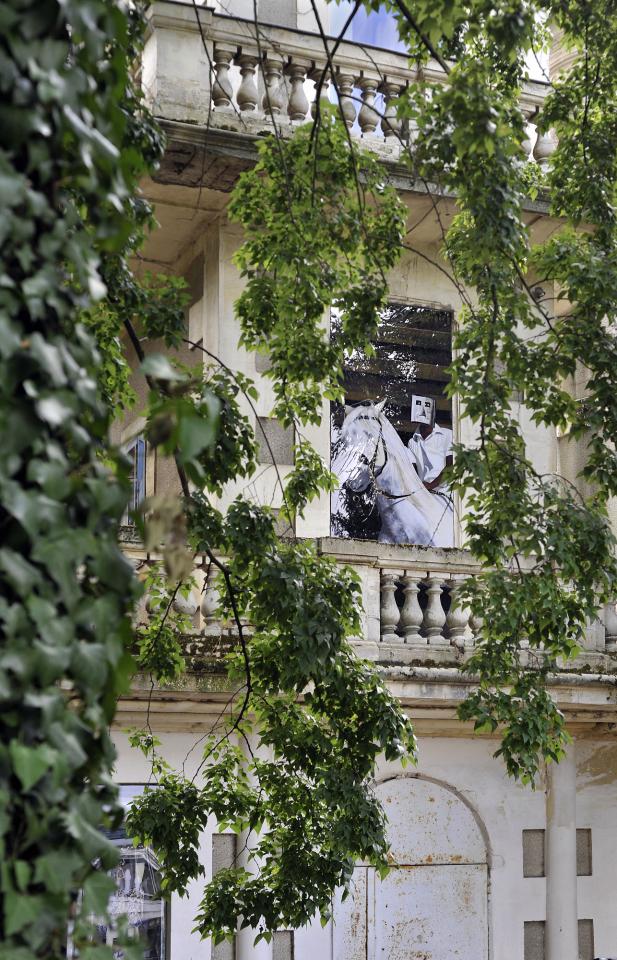
To see photographs of the 63 paintings within the artist’s catalogue:
https://dda-nouvelle-aquitaine.org/Mirabilia-detail-des-tableaux-47082
Translation: Elaine Krikorian